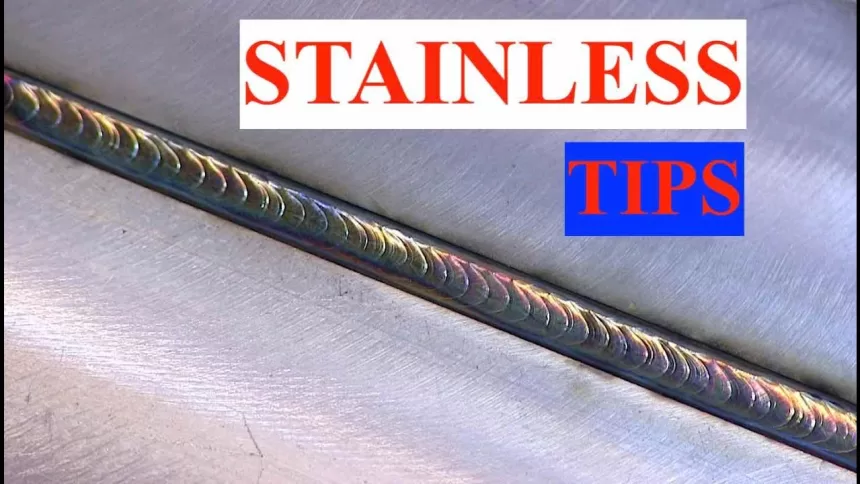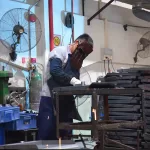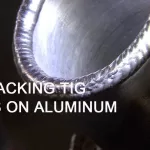TIG welding stainless steel can be intimidating for TIG welder beginners, especially when their welds turn out less than desirable despite following the same setup as a professional TIG welder. But fear not, there are several tips that can turn your welding nightmare into a masterpiece. From selecting the right tungsten rods to ensuring a clean workpiece and gas tips, along with proper speed and other critical factors, you can improve your TIG welding project significantly. Here are eight essential tips to embrace for your next stainless steel TIG welding job.
TIG Welds on Stainless Steel
Welding Town
- Opt for the Correct Tungsten Rod The market offers various types of tungsten rods with varying contents, but the key factor to consider for quality welds is the diameter of the rod. Using a larger diameter tungsten rod on low amps for welding light sheet metal will result in a struggle to start the weld, with uneven and inconsistent welds. As a rule of thumb, the heavier the stainless steel is welded, the larger the diameter of the tungsten rod. Use a chart to determine the correct tungsten rod diameter for your plate gauge, and match it with the appropriate amperage range.
| Material thickness | Tungsten diameter | Amp range |
| 1/16 | 1/16 | 80-20 |
| 3/32 | 1/16 | 100-30 |
| 1/8 | 3/32 | 120-150 |
| 3/16 | 3/32 | 150-250 |
| 1/4 | 1/8 | 200-350 |
| 1/2 | 1/8 | 235-375 |
- Prior to welding, it’s essential to clean the metal, especially in stainless steel TIG welding. There is a “no shortcuts” mentality that every stainless steel welder should embrace. Failure to clean the metal will result in bubbles that will weaken your weld and hinder the fluid motion your pass requires to create a clean bead. The level of dirt will determine the cleaning method. A clean rag may work, but acetone or other thinners may be necessary to remove everything efficiently.
- A clean and sharp tungsten tip is crucial for successful TIG welding. Often, the tip becomes dirty when the filler rod touches it and creates a blob, leading to a distorted arc that results in a wobbly, off-axis shape. The tip’s precision and arc shape are determined by how well the tip is ground. A finer point and smoother finish produce a cleaner and more accurate arc.
- To produce a clean weld, increase the gas coverage and minimize air getting into the weld. More gas for economic reasons will lead to a tidier weld, and using a wider cup to produce a broader coverage of gas will make a significant difference. A minimum number 12 cups should be used when possible.
- Weld with enough amperage to avoid undercutting or blowing through the weld, but travel quickly enough to avoid putting too much heat into the metal. The key is to match the heat by running the welder at 10% less than one amp per 0.001 inches of stainless steel.
- The right-sized and material filler wire is essential to the quality of the weld. Ensure that the filler wire matches the type of stainless steel being welded and that the size of the wire is suitable for the job. Using the wrong size of filler wire will result in an inconsistent and ugly weld.
- Back purging a weld is essential to keep the backside of the joint shielded from the air. This will help prevent oxidation and ensure that the weld bead is smooth and free from color and deformation.
- Finally, let your project cool between welds to prevent excessive heat build-up, warping, and discoloration. Take a break when you notice the metal getting too hot or starting to change color to avoid ruining your project.
That’s great advice! Taking the time to properly prepare your materials, clean your work area, and use the right settings and technique is crucial for achieving high-quality TIG welds on stainless steel. And as with any skill, practice, and patience are key to improving your welding abilities over time. By consistently applying these principles and being mindful of your technique, you can create beautiful, strong welds that will stand the test of time.
Different Stainless Steel Types
Our article discusses the most commonly available and welded stainless steel, 300-series, austenitic type.
The 300-series stainless steel is non-magnetic. That’s how you can always tell if the material is austenitic stainless steel. Just be careful not to mistake it for aluminum, which is also non-magnetic. Aluminum is far lighter, but if you are unsure, grind it a little. Stainless steel will create a stream of sparks, while aluminum doesn’t create sparks.
As for the magnet test, you should also know that some austenitic stainless steels like 304 grade can become magnetic after cold working, while 310 and 316 grades are more likely to remain non-magnet even after cold working (pressing, cutting, bending, etc.).

304 shaft for medical device
Image source: https://turntechprecision.com/clueless-machinist/2020/7/2/difference-between-type-303-and-type-304-stainless-steel-machining
Stainless steel types are:
- Austenitic – 300-series, mainly 304 and 316. It has excellent weldability and is the most widely used stainless steel type.
- Ferritic – 400-series, mainly 430 and 434. It’s magnetic and has lower nickel content. Ferritic stainless is a bit more challenging to weld than austenitic.
- Martensitic – Also 400-series, mainly 420. It has high tensile strength, but it’s less often used.
- Duplex – Family of stainless steels made by mixing austenitic and ferritic stainless steel. It’s often used in pipeline applications because it’s very strong and resistant to corrosion.

Image source: https://www.britannica.com/technology/stainless-steel
TIG Setup For Stainless Steel Welding
Now that we’ve discussed the most critical issues with welding stainless and its types let’s explain how to set up everything for TIG welding this material.
Shielding Gas
Using 100% argon for the shielding gas works best in almost all situations. However, adding helium to argon is sometimes needed to improve weld penetration and puddle fluidity. The more helium you add, the higher the heat input. So, unless you know exactly what you are doing, it’s best to stick to straight argon to TIG weld stainless steel.
Polarity
To TIG weld stainless steel, use a DC machine with electrode negative polarity (DCEN). That means you should attach the TIG torch to the negative polarity of the welder and the ground clamp to the positive polarity.





![12 Different Types of Welding Processes [The Definitive Guide] 6 12 Different Types of Welding Processes [The Definitive Guide]](https://www.021208.com/wp-content/uploads/2025/01/12-Different-Types-of-Welding-Processes-The-Definitive-Guide-150x150.jpg)







